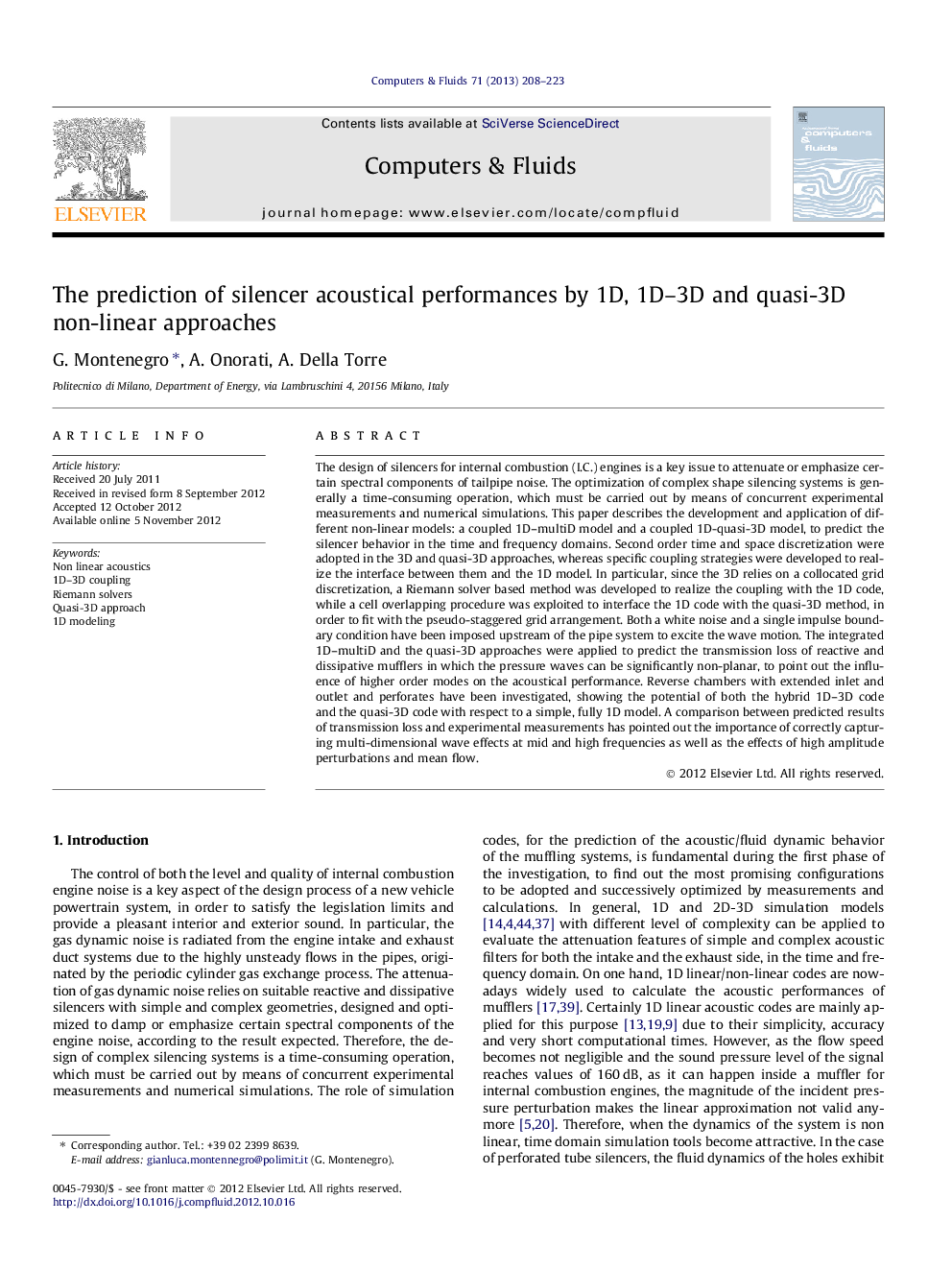| کد مقاله | کد نشریه | سال انتشار | مقاله انگلیسی | نسخه تمام متن |
|---|---|---|---|---|
| 756709 | 1462739 | 2013 | 16 صفحه PDF | دانلود رایگان |

The design of silencers for internal combustion (I.C.) engines is a key issue to attenuate or emphasize certain spectral components of tailpipe noise. The optimization of complex shape silencing systems is generally a time-consuming operation, which must be carried out by means of concurrent experimental measurements and numerical simulations. This paper describes the development and application of different non-linear models: a coupled 1D–multiD model and a coupled 1D-quasi-3D model, to predict the silencer behavior in the time and frequency domains. Second order time and space discretization were adopted in the 3D and quasi-3D approaches, whereas specific coupling strategies were developed to realize the interface between them and the 1D model. In particular, since the 3D relies on a collocated grid discretization, a Riemann solver based method was developed to realize the coupling with the 1D code, while a cell overlapping procedure was exploited to interface the 1D code with the quasi-3D method, in order to fit with the pseudo-staggered grid arrangement. Both a white noise and a single impulse boundary condition have been imposed upstream of the pipe system to excite the wave motion. The integrated 1D–multiD and the quasi-3D approaches were applied to predict the transmission loss of reactive and dissipative mufflers in which the pressure waves can be significantly non-planar, to point out the influence of higher order modes on the acoustical performance. Reverse chambers with extended inlet and outlet and perforates have been investigated, showing the potential of both the hybrid 1D–3D code and the quasi-3D code with respect to a simple, fully 1D model. A comparison between predicted results of transmission loss and experimental measurements has pointed out the importance of correctly capturing multi-dimensional wave effects at mid and high frequencies as well as the effects of high amplitude perturbations and mean flow.
► We describe the models used and developed for the acoustic analysis: 1D, 3D and quasi-3D.
► We discuss the 1D coupling approach and the boundary conditions developed.
► We validate the three approaches onto two reverse flow chambers.
► We validate the three approaches onto silencers with perforates.
► We conclude that the quasi-3D approach gives the most accurate results with the lowest computational burden.
Journal: Computers & Fluids - Volume 71, 30 January 2013, Pages 208–223